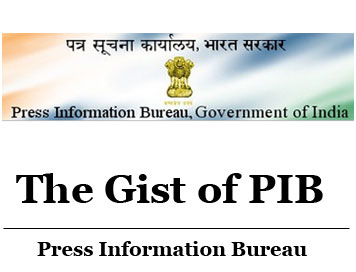A blow against social justice (The
Hindu)
Mains Paper 2: Polity
Prelims level: SC/ST Act
Mains level: Validity of reservations in promotions
Context:
- The recent verdict of a two-judge Supreme Court Bench on reservations
and Scheduled Caste and Scheduled Tribes promotions — “that no individual
could claim reservation in promotions and that the court could not issue a
mandamus directing State governments to provide reservation” — has mainly
raised four constitutional questions: Whether reservation in promotions is a
fundamental right or not.
- Whether a court can direct the state to provide reservations. Whether
quantifiable data for inadequate representation is a must for giving
reservation in promotions. And whether it is the obligation of the state to
give reservation.
Background:
- In the first instance, as this case involves multiple constitutional
issues, it should have been dealt with by a larger constitutional bench that
included a Scheduled Caste (SC) or Scheduled Tribe (ST) judge.
- So, it is the moral responsibility ........................
CLICK HERE FOR FULL EDITORIAL (Only for Course Members)
Constitutional validity:
- The scope for reservation for the Backward Classes is promised in Part
III of the Constitution under Fundamental Rights.
- Articles 16(4) and 16(4A) which empowers the state to provide
reservation for SCs and STs are a part of the section, “Equality of
opportunity in matters of public employment”.
- The right to equality is also enshrined in the Preamble of the
Constitution. Many construe that the reservation is against Article 16
(Right to equality). But one should understand that the absence of equal
opportunities for the Backward Classes due to historic injustice by virtue
of birth entails them reservation.
- In other words, the right to equality is the basis of reservation as
there is no level-playing field among castes.
- Articles 16 (2) and 16(4) are neither contradictory nor mutually
exclusive in nature.
- They are complementary to each other; even Article 16(4) is not a
special provision.
Whether reservation should be applied in promotions?
- In India, where there is a peculiar hierarchical arrangement of caste,
it is conspicuous that SCs and STs are poorly represented in higher posts.
- Denying application of reservation in promotions has kept SCs and STs
largely confined to lower cadre jobs. This is even seen in the higher
judiciary.
- To providing reservation for promotions is even more justified and
appropriate to attain equality.
- The question of law is not about enabling reservations in promotions or
not, but this judgment destabilises the very basis of reservation; when
there is no direct recruitment in higher posts, the implementation of
reservation is justified at every level to get a reasonable representation.
- It is not correct to subdivide the scope of reservation at the entry
level and in promotions; this delineation will only lead to confusion in the
implementation of reservation.
- Now, by declaring that reservation cannot be claimed as a fundamental
right is a dangerous precedent in the history of social justice.
- Can a court issue a mandamus to the state for providing reservation?
- This is inappropriate because when the court is empowered to pass orders
to create extra seats every year for forward-caste students who claim to be
affected by reservation, why cannot it direct the state to provide
reservation in promotions?
- The Supreme Court has extraordinary powers under Article 142, which
empowers the Court to pass any order necessary for doing “complete justice
in any cause or matter pending before it”.
Necessity of quantifiable data to show an inadequate representation of
reserved category people:
- This question has been addressed in the Constitution. Article 16(4)
reads: “Nothing in this article shall prevent the State from making any
provision for the reservation of appointments or posts in favour of any
backward class of citizens which, in the opinion of the State, is not
adequately represented in the services under the State.”
- In the Indra Sawhney vs Union of India case (Mandal Commission) the idea
of quantifiable data on inadequate representation was applied for exceeding
the 50% cap for reservation; within 50% where the existing quotas for SCs
and STs are accommodated were not affected.
- The responsibility of collecting data on representation
..........................
CLICK HERE FOR FULL EDITORIAL (Only for Course Members)
Administrative efficiency:
- This judgment has raised a new point — that the decision of the State
government to provide reservation for SC/STs should not affect the
efficiency of administration.
- This implies that the entry of SC/STs in the job market can reduce the
quality of administration; this by itself is discriminatory.
- There is no evidence that performance in ......................
CLICK HERE FOR FULL EDITORIAL (Only for Course Members)
Conclusion:
- If the government at the Centre has genuine concern for SC/STs, it can
amend the Constitution using its political majority.



